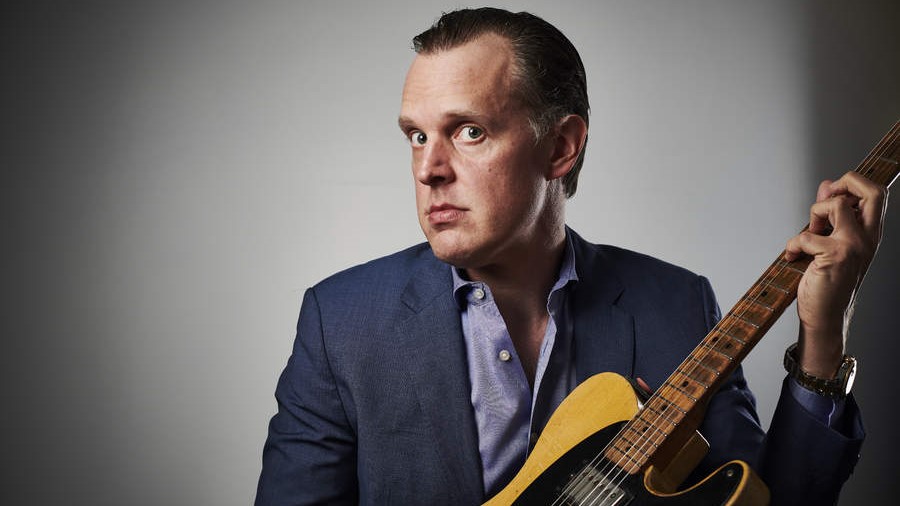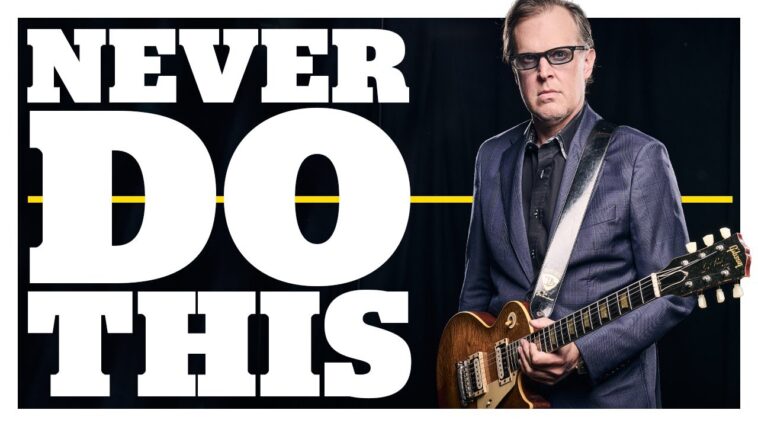Joe Bonamassa, the decorated blues guitar player and owner of home-turned-museum, Nerdville, is keen to dispel a myth about himself.
“No,” he tells Guitarist“I have not purchased all the guitars in the world, as some internet people say.” And nor does he plan to, leaving “plenty more fish in the sea,” for others to buy, sell, and barter over.
On the other hand, he accepts that, during his nearly 50 years on the planet, he has learned a thing or two about buying gear. For every incredible purchase he’s made — like the 1950 Fender Broadcaster he scored from Norman’s Rare Guitars — he’s wasted his cash elsewhere.
So what advice does Bonamassa have for those who want more of the former and less of the latter?
As his own actions have proved over the years, players need to tread their own paths. Chasing trends and buying for bragging rights are blind alleys. The guitar market is vast, so players should focus on what’s right for them on a personal and playability level, not what other people may think of their purchase.
That’s true whether you’re buy a collectible axe or one for practice or gigging.
“I’ve learned that keeping up with the Joneses isn’t what you want to do,” he says. “At some point in time in your life, you wake up in the morning, pour a cup of tea or coffee, and you realize you fucking hate the Joneses.”
Buyer’s remorse is a feeling that most guitar players will be all too familiar with. The long-term ogling of a piece of gear and the romance around one day owning it can cloud judgment.
Blackberry Smoke’s Charlie Starr craved a ’90s Les Paul Special for yearsonly to find it was “atrocious” when he finally got his hands on one. Yvette Young, meanwhile, bought a banjo while third-wheeling on a date and instantly regretted it. It gets to us all, so Bonamassa feels it’s wise to take a breath before flashing a credit card around.
“My suggestion is — if you’re a collector, a hobbyist, or a professional musician — to buy things that make you happy,” he continues. “If you’re sitting on the couch and you can’t stop grabbing a guitar, it doesn’t matter what it says on the headstock. It doesn’t matter how much you paid for it.
“You pick up the guitar and it inspires you to play and you can just zone out for three hours and not think about anything. That’s the guitar you want.”

Developing further on his comments about how a player should be selfish in their gear choices, rather than simply swimming with the flow of the current, he adds: “Buy the stuff that speaks to you before you buy the stuff that you think is going to impress your friends.”
Indeed, it’s a theory he swears by. When showing off his live rig to the world, which features “the world’s most expensive three-channel amp,” he says he purposely swims upstream.
“Whatever the internet tells me to do, I tend to do the exact opposite,” he jokes.
Furthermore, it shouldn’t be forgotten that guitars are tools of the trade, whether that trade pays the bills, or simply passes a player’s free time.

“You want to be able to create sounds and tones and things that you enjoy and that augment and support the music you’re making, not what somebody else is doing,” Bonamassa’s tip-giving establishes. “And you need an amplifier that can keep up.”
On that, Joe Bonamassa has also been offering his best amp-buying tips. Finding the right amp needn’t be a complex or pricey search, he ascertains, if players scale their amp choices according to the gigs they play.
“You don’t bring a high-powered ‘[Fender] Tweed Twin to a small blues gig,” he says with a wry smile. “It’s just too loud. You want something that is power appropriate but when you solo it has enough headroom to where you feel it.”
Meanwhile, Bonamassa has promised himself that his latest amp buy – his ninth Sludge — will be his “last big amp purchase” as he looks to limit the amount of splurges he makes year after year. The guitar community, though, is a little skeptical that will ring true.
